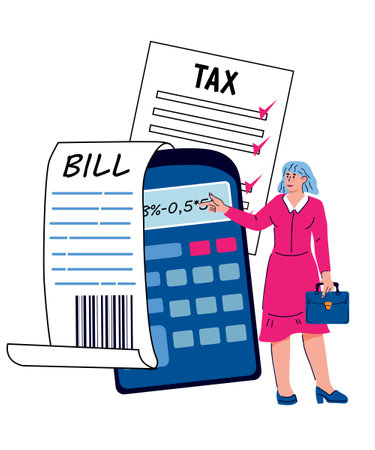Introduction to Budgeting in the UK Context
Effective budgeting is a cornerstone of financial wellbeing for households across the United Kingdom. In a country renowned for its diverse economy and rich cultural tapestry, British families are increasingly aware of the need to manage their finances prudently. The importance of personal and household budgeting has never been more pronounced, given ongoing economic pressures such as rising living costs, fluctuating interest rates, and uncertainty surrounding global markets. British budgeting behaviours are uniquely influenced by local factors: from the ingrained tradition of thrift and saving for a rainy day, to contemporary challenges like managing digital subscriptions and adapting to contactless payments. Understanding these cultural and economic nuances is crucial when evaluating the range of budgeting tools available to UK households—whether traditional pen-and-paper methods or innovative digital solutions. This article explores how these tools compare, helping every UK household make informed choices in their financial planning.
Traditional Budgeting Methods: Strengths and Limitations
For generations, households across the UK have relied on traditional budgeting methods to manage their finances. These typically involve manual processes such as jotting down expenses in notebooks, using paper-based ledger books, or organising receipts in envelopes. While digital advancements have surged in popularity, these classic approaches continue to hold a significant place among families seeking control and visibility over their budgets.
Popular Manual Budgeting Tools in the UK
| Method | Description | Common Users |
|---|---|---|
| Pencil & Paper Ledger | Recording income and expenses by hand in a notebook or dedicated ledger book | Pensioners, those less familiar with technology |
| Envelope System | Allocating cash into separate envelopes for bills, groceries, savings, etc. | Cash-based households, individuals controlling discretionary spending |
| Printable Budget Sheets | Using templates printed from online sources for monthly tracking and planning | Families with structured financial routines |
| Bank Statements & Chequebooks | Reconciling bank statements manually and recording each transaction in a chequebook register | Older adults, those who value physical records |
Strengths of Traditional Budgeting Methods
- Familiarity: Many Britons feel more comfortable with pen-and-paper methods, especially older generations accustomed to physical records.
- Tangible Control: Physically handling money and documents offers a sense of direct engagement with personal finances.
- No Need for Technology: Ideal for those without access to smartphones or computers or who prefer offline solutions.
- Simplicity: Straightforward processes make it easy to get started without needing technical know-how.
Limitations and Challenges Faced by UK Households
- Time-Consuming: Manually tracking every transaction can be laborious and difficult to maintain regularly.
- Error-Prone: Calculations and record-keeping are susceptible to mistakes, which may lead to inaccurate budgeting outcomes.
- Lack of Real-Time Insights: It is harder to see an up-to-date financial overview or spot trends without automation.
- Difficult Data Storage: Paper records are vulnerable to loss, damage, or misplacement over time.
- Lack of Integration: Traditional methods do not sync with modern banking tools or credit card accounts, requiring duplication of effort.
The Bottom Line for UK Households Using Traditional Budgeting Tools
While manual and paper-based budgeting remains relevant—particularly among those valuing tradition or simplicity—these approaches are best suited for households that prioritise tangible interaction over efficiency. However, as financial management becomes increasingly complex, many UK families may find themselves weighing these classic advantages against the drawbacks of slower processes and a greater risk of human error.

3. Digital Budgeting Tools: Modern Solutions for Modern Lives
In recent years, digital budgeting tools have become increasingly popular among UK households, offering a level of convenience and sophistication that traditional methods often lack. The British market now boasts a wide array of mobile apps and online platforms specifically tailored to the unique needs of local users. These tools are designed not only to simplify daily money management but also to provide deeper insights into spending habits and financial health.
Ease of Use for Busy UK Families
One of the primary advantages of digital budgeting solutions is their user-friendly interface. Popular apps such as Money Dashboard, Emma, and Snoop are engineered with intuitive designs, making it straightforward for individuals and families to track income, categorise expenses, and set financial goals. Many applications support customisable alerts and easy navigation, ensuring that even those new to personal finance can get started without hassle. This accessibility is crucial for busy households seeking efficient ways to stay on top of their finances without dedicating excessive time each week.
Seamless Integration with British Banks
A defining feature of digital budgeting tools in the UK is their strong integration with high street banks and challenger banks alike. Thanks to the Open Banking initiative, users can securely connect their current accounts, credit cards, and savings accounts from providers such as Barclays, Lloyds, Monzo, Starling Bank, and more. Real-time transaction syncing ensures that financial data is always up-to-date, allowing for accurate budgeting and timely adjustments. This seamless connectivity eliminates the need for manual entry and reduces the likelihood of errors—an essential benefit for households juggling multiple accounts or income sources.
Enhanced Financial Insights and Recommendations
Beyond basic expense tracking, modern digital platforms offer comprehensive analytics that empower UK households to make informed financial decisions. Advanced features include automated categorisation of spending (for example: groceries, utilities, travel), monthly trend reports, and personalised recommendations for saving or reducing unnecessary outgoings. Some apps even analyse direct debits and subscriptions—helping users identify forgotten services draining their budgets. These actionable insights can be invaluable for families looking to stretch their income further in a cost-conscious environment.
Tailored Features for Every Household
The diversity of digital budgeting tools means there is something suitable for everyone—from students managing limited funds to large families coordinating complex budgets. Whether you prefer simple visual dashboards or in-depth analysis, today’s options offer a bespoke approach adaptable to individual preferences and household dynamics.
4. Comparative Analysis: Which Approach Suits Different UK Households?
When evaluating traditional versus digital budgeting tools, it is essential to recognise that UK households are far from homogenous. Differences in age, regional context, and varying levels of technological confidence all play a significant role in shaping which approach is most suitable. Below is a side-by-side comparison considering these factors, offering practical insight for every British household.
Age Groups: Generational Preferences
| Age Group | Traditional Tools (e.g., paper budgets, spreadsheets) | Digital Tools (e.g., apps, online platforms) |
|---|---|---|
| 18-30 (Young Adults) | Less preferred; viewed as outdated and time-consuming | Highly preferred; mobile-first, instant notifications, easy integration with online banking |
| 31-50 (Working Age) | Some still use spreadsheets for familiarity and control | Increasing adoption; value automation and real-time tracking |
| 51+ (Older Adults) | Favoured for simplicity and privacy concerns; pen-and-paper feels secure | Adoption growing but often limited by digital skills; simple interfaces preferred if used |
Regional Considerations Across the UK
| Region | Traditional Tools Suitability | Digital Tools Suitability |
|---|---|---|
| London & South East | Lower; fast-paced lifestyle favours digital convenience | High; widespread internet access and tech adoption |
| Northern England & Scotland | Moderate; some preference remains due to tradition and slower tech uptake in rural areas | Growing; especially among urban populations and younger residents |
| Northern Ireland & Wales | Higher in rural/older populations; tradition holds strong in certain communities | Emerging; dependent on broadband availability and local initiatives promoting digital literacy |
Differing Levels of Tech-Savviness Among Britons
Low Tech-Savvy Households:
Pencil-and-paper or spreadsheet budgeting remains the most accessible option, requiring no new skills or devices. There are concerns around data privacy that favour traditional methods.
Adequate to High Tech-Savvy Households:
This group benefits most from digital tools offering automation, cloud storage, personalised insights, and seamless bank integrations. The ability to track spending in real time suits busy lifestyles and provides a clearer overview of financial health.
Summary Table: Matching Tools to Household Profiles
| Household Profile Type | Best Fit Budgeting Tool Type |
|---|---|
| Younger, urban, digitally fluent families/couples/individuals | Digital apps/platforms with mobile support and open banking features |
| Mature or multi-generational households with mixed tech skills, often outside major cities | A combination approach: spreadsheets plus simple digital tools or guided family budgets using both formats as needed |
| Pensioners or those with limited digital confidence in rural regions | Pencil-and-paper ledgers or printable budget planners; community workshops can help gradual transition if desired |
This comparative analysis underscores that the most effective budgeting tool is one aligned not just with financial goals but also with household demographics and comfort levels with technology across the UK.
5. Security, Privacy, and Trust: Navigating Concerns in a UK Setting
When comparing traditional and digital budgeting tools for British households, the issues of security, privacy, and trust are paramount. The UKs financial landscape is shaped by a long-standing respect for personal privacy and cautious adoption of new technologies, especially when it comes to managing sensitive financial data.
Traditional Methods: Built-In Trust and Familiarity
Traditional budgeting tools—such as pen-and-paper ledgers or locally stored spreadsheets—are perceived as inherently secure. These methods do not involve sharing data with third parties or exposing information online. For many UK consumers, this approach aligns with cultural expectations of confidentiality and direct control over ones finances. However, they lack protection against physical loss or damage (for example, lost notebooks or corrupted files) and provide limited options for backup or recovery.
Digital Solutions: Enhanced Protection but New Risks
Digital budgeting platforms operating in the UK are required to comply with strict regulations like the General Data Protection Regulation (GDPR) and the Financial Conduct Authority (FCA) guidelines. Many apps offer advanced encryption, multi-factor authentication, and regular security audits to protect user data. Nonetheless, British users often express concerns about potential data breaches, unauthorised access, and how their personal information might be used or shared beyond their consent.
Cultural Attitudes Towards Digital Finance
The British public typically values transparency and accountability from financial service providers. There is a growing expectation that digital budgeting apps clearly communicate their data handling policies in plain English, outlining exactly how information is stored, processed, and shared. Some users remain wary of linking bank accounts to third-party apps due to worries about identity theft or misuse of financial data—even when reassured by robust compliance measures.
Finding the Right Balance for Your Household
For UK households weighing traditional versus digital budgeting tools, the choice often hinges on comfort with technology versus the desire for hands-on control and privacy. While digital solutions can streamline financial management and offer powerful insights, it’s essential for users to select reputable providers with transparent privacy practices and strong security credentials. Ultimately, understanding both the capabilities and limitations of each approach will empower British consumers to safeguard their financial wellbeing while embracing modern convenience where appropriate.
6. Recommendations for Choosing the Right Budgeting Tool
Selecting the optimal budgeting tool for your household is highly personal and should align with your specific circumstances, financial aspirations, and even regional tendencies across the UK. Here are practical recommendations to guide you in making a well-informed choice.
Assess Your Lifestyle and Habits
If your household prefers simplicity and minimal digital engagement, traditional methods such as paper budgets or spreadsheet templates may be ideal. These tools offer tactile control and are particularly appealing for those who value hands-on management. Conversely, if your family embraces technology and seeks convenience, digital budgeting apps can provide real-time tracking and automation, which is especially useful for busy urban dwellers in cities like London or Manchester.
Consider Your Financial Goals
Households aiming for long-term wealth building or complex financial planning might benefit from advanced digital platforms that integrate investment tracking and goal-setting features. For families focusing on day-to-day expense monitoring or debt reduction, simpler tools—whether traditional notebooks or basic apps—can suffice without overwhelming users with unnecessary functions.
Factor in Regional Preferences and Resources
Cultural differences across England, Scotland, Wales, and Northern Ireland can influence budgeting preferences. For example, communities with limited broadband access may favour offline solutions, while metropolitan areas with widespread connectivity are more suited to digital tools. It’s also worth considering local financial education initiatives or support services that might recommend specific budgeting methods tailored to regional needs.
Test Before You Commit
Many digital budgeting tools offer free trials or basic versions. Take advantage of these to experiment before making a commitment. Likewise, try different traditional formats to see which feels most intuitive for your family.
Combine Methods for Maximum Effectiveness
Some UK households find hybrid approaches most effective—such as using a digital app for tracking but maintaining a paper budget for weekly reviews. This blend can deliver both oversight and flexibility, catering to multiple family members’ preferences.
Final Thought
The best budgeting tool is one that fits seamlessly into your daily life while helping you achieve your financial goals. Evaluate your household’s habits, aspirations, and local context to make a confident choice—ensuring your finances remain firmly under control, regardless of whether you opt for traditional or digital solutions.
7. Conclusion: Balancing Tradition and Innovation in UK Budgeting
As we have explored throughout this comparison of traditional and digital budgeting tools for UK households, both approaches offer distinct advantages that can help individuals and families achieve their financial goals. Traditional methods, such as paper-based ledgers or manual spreadsheets, are valued for their simplicity, tangibility, and the hands-on control they provide. These methods can foster a deeper understanding of spending habits, which many Britons continue to appreciate for their familiarity and reliability.
On the other hand, digital solutions—ranging from banking apps to specialised budgeting platforms—bring efficiency, automation, and real-time insights into everyday money management. With features like transaction categorisation, instant notifications, and integration with open banking, digital tools are particularly well-suited to the fast-paced lifestyles of modern UK households. They make it easier to stay on top of bills, set savings goals, and adapt quickly to changing financial circumstances.
Key Insights for UK Households
- Accessibility: Digital tools can be accessed anytime and anywhere, but traditional methods may be more inclusive for those less comfortable with technology.
- Control: Manual tracking offers granular control and transparency; digital platforms automate processes but may abstract some details.
- Cultural Fit: Many UK households value a blend of both approaches to respect established habits while embracing innovation.
A Forward-Looking Perspective
The future of effective budgeting in the UK lies in a thoughtful integration of tradition and innovation. By combining the trustworthiness of tried-and-tested manual systems with the convenience and intelligence offered by digital solutions, households can build resilient financial habits that adapt to evolving needs and technologies. For example, using a physical budget planner alongside an app can reinforce discipline while leveraging smart features for efficiency.
Practical Recommendation
UK families should assess their own comfort levels, financial objectives, and daily routines to select a mix of tools that support sustainable money management. Whether starting with pen-and-paper or exploring advanced fintech options, the key is regular engagement and ongoing evaluation of what works best. By remaining open to both tradition and progress, every household can take confident steps towards greater financial stability in an ever-changing economic landscape.


